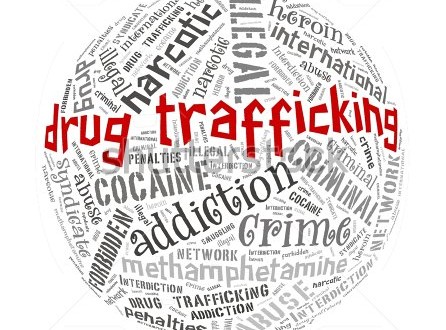When one begins to think of substance abuse, the first that may come to mind is teenagers, older people, or just civilians in general. However, what one might not think about is the abuse of drugs among active duty soldiers, reserve soldiers, or veterans. This may not be a very highlighted topic because statistics do show rates of such activities are higher among civilians than military personnel. Though this is not seen as a very major problem, it is a problem nonetheless.
As stated above and according to the National Institute on Drug Abuse or NIH, drug use is found to be much lower among military veterans than civilians. However, “heavy alcohol and tobacco use, and especially prescription drug abuse, are much more prevalent and are on the rise.” What then should naturally come to mind next is the question of “why” these rates are much higher. Surprising to be, this actually comes with a quite simple answer. The NHIDA states that “The stresses of deployment during wartime and the unique culture of the military account for some of these differences…. Those with multiple deployments and combat exposure are at greatest risk of developing substance use problems. They are more apt to engage in new-onset heavy weekly drinking and binge drinking, to suffer alcohol- and other drug-related problems, and to have greater prescribed use of behavioral health medications. They are also more likely to start smoking or relapse to smoking.” However, this reasoning mainly applies to active soldiers as well as reserve troops.
The next ones to dive into with drug abuse as well as other abuses are military veterans. There is a given reason to this which is broken down into two main parts. The first part of the reasoning which revolves around tobacco, alcohol, and some drugs, is to the lack of treatment as well as the continuation of effects and habits which was listed above. The second part of this comes from the National Veterans Foundation or NVF. In such, NVF state that “Combat today is vastly different than it was even 40-50 years ago, and the new war on terror has increased the trauma and emotional toll combat has had on our service members. Prescription drug abuse is on the rise among veterans because many are treated with powerful narcotic pain medications for injuries. Over time, veterans can become dependent on these drugs and eventually an addiction can develop.” Between the reasons for active and veteran military soldiers, conclusions can be drawn that with there being similar issues, a solution should be possible.
However, before diving into the solutions the above reasons and issues, I would like to dive into the statistics of Drug use among current and past military members. The first of which will be covered revolves around veterans. In regard to that, according to Substance Abuse and Mental Health Services Administration or SAMHSA “There are an estimated 23.4 million veterans in the United States and Between 2004 and 2006, 7.1% of U.S. veterans met the criteria for a substance use disorder.” Unfortunately, more recent data could not be located on such a topic.
For those non-veterans, according to Global Security, for the United States the Personal End Strength-end, FY2017 (Military Personnel) totals to about 2,875,500 personnel with 1,296,900 being active duty, 448,700 being national guard, 364,500 being selected reserve, and 764,400 being civilian. Though these numbers are for the year 2017, in 2008, according to NIH, “11 percent of service members reported misusing prescription drugs, up from 2 percent in 2002 and 4 percent in 2005. Most of the prescription drugs misused by service members are opioid pain medications.”
With veterans and current personnel, between the two, prescription drugs are what seem to be the main issue. This would make since because in Colton Nutbrown’s blog Prescription Problems “In a 15 year span between 1999 and 2014 the sale of prescription opioids has quadrupled, similarly the rate of overdose has quadrupled in the same time.” With both aspects in mind, a correlation could be drawn between the rise in sales of opioids as well as the rise of abuse among veterans and current serving military personnel. Though, after covering the reasoning and statistics, the last thing I would like to cover is how to fix or combat this problem.
In my humble opinion this is a serious issue that I believe should be treaded lightly. This is because what these soldiers have endured is why they are choosing this destructive past. I believe that it first should start with the family’s and addressing the early stages of such behavior. Once noticing the symptoms, they should then take advantage of the medical care the military provides, such as mental health care and prevention. For those that doubt, many of the programs are based off programs issued by the Institute of Medicine (IOM) Committee for Prevention of Mental Disorders. Lastly, even with this institution backing the programs, each branch has its own respective prevention program. In conclusion, I believe that even though this is not covered much, this is a serious issue and should be addressed as such.
-Samuel Good lll
References
NIH: National Institute on Drug Abuse (2013, March 01). Substance Abuse in the Military. Retrieved October 05, 2017, from https://www.drugabuse.gov/publications/drugfacts/substance-abuse-in-military
NVF: National Veterans Foundation (2016, March 30). Veteran Substance Abuse – What do the Statistics Tell Us. Retrieved October 04, 2017, from https://nvf.org/veteran-substance-abuse-statistics/
SAMHSA: Veterans and Military Families. (2017, September 15). Retrieved October 05, 2017, from https://www.samhsa.gov/veterans-military-families
Global Security: Pike, John (2017, September 4). Military. Retrieved October 05, 2017, from https://www.globalsecurity.org/military/agency/end-strength.htm
Prescription Problems: Cnutbrown. (2017, September 30). Prescription Problems. Retrieved October 05, 2017, from https://drugsjust3342017.wordpress.com/2017/09/30/prescription-problems/



